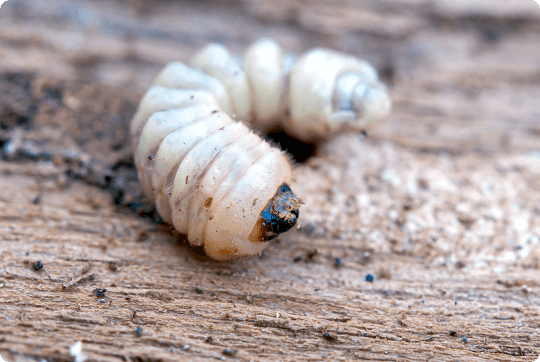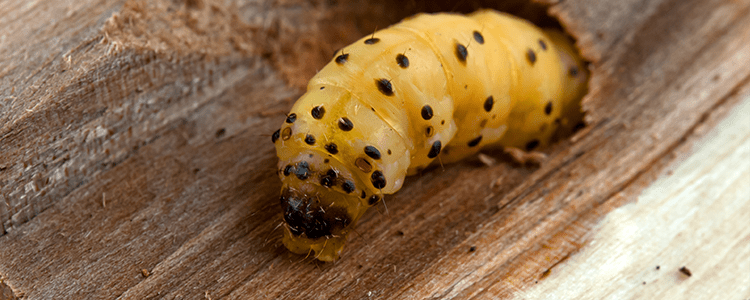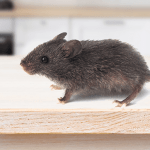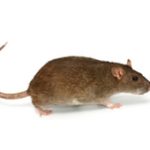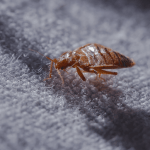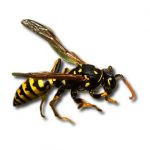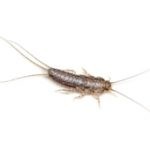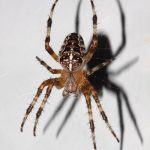How to Identify Woodworm in Your House?
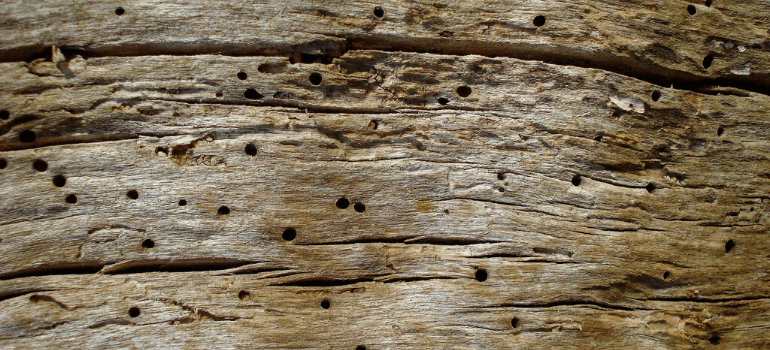
Most of us have seen timber peppered with tiny holes all over. What many might not know is that this is the work of a woodworm. Not only does the wood appear unattractive in these cases, but it could also be structurally compromised. That’s because woodworm tends to favour untreated wood, such as ceiling joists, struts and beams, floorboards, skirting boards, and other wooden elements, integral to your house’s structure and safety. Read more about woodworm and the signs of an infestation below.
What Causes Woodworm?
Woodworms love soft, damp timber, so the main cause of an infestation is excess moisture, resulting from poor ventilation of a basement, roof, or anywhere else, where it’s actually supposed to be dry.
Woodworm is an umbrella term for as many as 8 different wood-boring beetle species, each with its own unique combination of shape, size, colour, and preferred type of wood. The most widespread beetle in the UK is the Common furniture beetle, which prefers softwoods, particularly those that are damp or old.
How Does Woodworm Spread?
Woodworm rarely spread to another piece of wood in the house, but it is not unheard of. It might happen if the adult beetles choose to lay their eggs somewhere else. The reason usually is that the other piece of timber is a better home with more resources and dampness than the previous location.
Usually, properly varnished or painted pieces of wooden furniture are unsuitable for woodworm, prompting them to go for the untreated structural wood in your home. As mentioned earlier, this can pose a significant threat to your home’s safety.
What Does a Woodworm Look Like?
Interestingly enough, woodworm aren’t worms at all but wood-boring beetle larvae. What happens is that the adult beetle lays its eggs between the cracks of the timber, where afterwards they turn into larvae or grubs. The grubs need food and the wood is their only source of nourishment for the next couple of years.
These worm-like larvae burrow through the timber and create tunnels, which decreases the wood density and strength. Once they mature and grow in size, the grubs eat their way to the surface, where they pupate and leave the wood as beetles, and the process repeats itself.
Check also: Most Common Wood Boring Insects in the UK
Common Signs of Woodworm
Find out how to tell if you have woodworm by looking for the most common signs listed below. When you collect all the evidence and you think you might have an infestation, call one of our Fantastic Pest Control Specialists to handle it for you!
Woodworm Holes
Round or oval holes in the wood are the most common and well-known sign of a woodworm infestation. They are between 1 and 3mm in diameter, depending on the species that has found home inside your wooden structures, and have sharp edges. These actual exit holes, also called flight holes, are created when the adult beetle leaves the timber to find a mate.
Fortunately, they are not always a sign of an active infestation. If you have previously had woodworm, the holes will still be visible, but won’t look fresh or have frass around them.
Woodworm Frass
Also known as bore dust, frass is the fine powder that is often found around or below the aforementioned woodworm holes. Sometimes the frass might be a little sticky, which is the case with wood-boring weevils.
While it might be tempting to think that these are tiny wood shavings, that is wrong, and actually, the bore-dust is the woodworm waste that the larvae produce while burrowing. Checking regularly if frass has formed around the holes is the easiest and most straightforward way to determine if you have an active woodworm infestation.
Tunnels in Wood
If you can cut a part of the wood, upon closer inspection, you will see the tunnels that have been bored through the timber. This sign is difficult to spot since it is not always possible to observe the wood below its surface. Another time when you would be able to see these galleries, as they are also known, is when the wood breaks.
Crumbling Wood
Often found around the corners and the edges of the joists and floorboards, crumbling wood is the result of excessive tunnelling and flight holes around the edges of the timber. There is simply not enough wood to maintain the shape of the board or joist.
This is often combined with weak or damaged wood. If your foot suddenly goes through the floorboard, it is worth investigating the problem yourself or hiring a professional to do it for you.
Seeing Adult Beetles
Adult beetles, dead or alive, are a sure sign of an infestation. You might be able to see them exiting the timber, typically between March and October, or lying around the infested wood or near the window sills. Dead beetles aren’t necessarily a telltale sign of an active infestation if you find them in an area that you do not commonly inspect, like a basement or a loft.
Can you Hear Woodworm?
Many people think that you can hear woodworm, so they aren’t worried if there is no noise. Unfortunately, not all wood-boring grubs make sounds. More precisely, only the Death Watch Beetle can be heard. This species infests oak, chestnut, and other hardwoods, especially those previously weakened by wet rot. It most commonly affects properties in the central and southern parts of the UK but can be found throughout the country.
Read more: How to Get Rid of Woodworm Infestation
Conclusion
Woodworm is a serious and dangerous problem to have in your house. It can not only cause structural damages worth thousands of pounds but also poses a great threat to your and your family’s health and safety. If you are worried you might have woodworm, or even if you are certain that you don’t, follow the guide above to ensure that your house’s floorboards, ceiling joists, and struts are woodworm-free. Look for small exit holes, fine bore dust, tunnels in the wood, crumbling wood, or live or dead beetles in order to assess your property the right way! The best you can do to save your furniture is to contact a professional woodworm treatment specialist who will treat the infested areas and will do it with the right equipment for no time.
Want a professional to inspect your property?
We provide helpful information according to the expertise and knowledge of the pest technicians. However, we don’t offer any medical advice.



